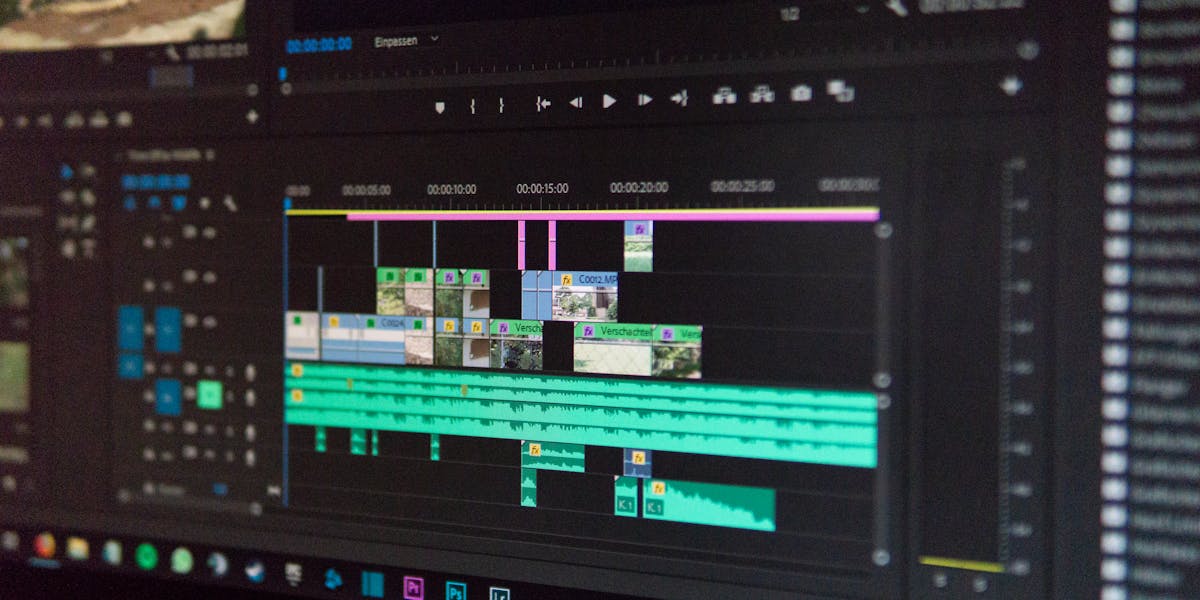API video generation is transforming the digital landscape, enabling developers and content creators to streamline the video production process like never before. By leveraging API technology, users can automate video creation, saving both time and resources. This article will delve into understanding API video generation, exploring its key benefits, and illustrating how it simplifies production workflows. We will also examine popular tools in the market and discuss how to effectively integrate API video generation into various workflows. Furthermore, troubleshooting common issues and future trends in this rapidly evolving technology will be covered, offering a comprehensive guide for those looking to enhance their video production capabilities.

“`html
Understanding API Video Generation
API video generation is a transformative technology that allows developers to create, manipulate, and distribute video content programmatically. By using APIs, or Application Programming Interfaces, developers can automate video production processes, integrate video functionalities into applications, and enhance user experiences.
What is API Video Generation?
API video generation involves utilizing APIs to create or modify video content. These APIs provide a set of tools and protocols that enable developers to interact with video creation software without manual intervention. This process can include tasks such as video editing, applying effects, or rendering videos in various formats.
How Does It Work?
APIs act as intermediaries between different software applications, allowing them to communicate. In the context of video generation, an API might connect a video editing platform with a web application, enabling automated video creation based on predefined parameters.
Core Components of API Video Generation
- Video Editing: APIs can facilitate editing tasks such as trimming, cropping, and adding transitions.
- Rendering: APIs allow for rendering videos in different resolutions and formats, suitable for various platforms.
- Integration: APIs enable seamless integration of video functionalities into existing applications, enhancing their capabilities.
Advantages of API Video Generation
API video generation offers several advantages, including:
- Automation: Reduces the need for manual intervention, saving time and resources.
- Scalability: Facilitates the creation of large volumes of video content efficiently.
- Customization: Allows for personalized video experiences tailored to user needs.
Understanding API video generation is crucial for developers and businesses looking to leverage video content in innovative ways. By integrating APIs, they can streamline video production processes, enhance application functionalities, and meet the growing demand for dynamic video content.
“`
“`html
Key Benefits of Using API for Video Creation
APIs offer a range of benefits that can significantly enhance the video creation process. By leveraging APIs, creators can streamline workflows, improve efficiency, and produce high-quality content with ease. Below are some of the key advantages of using APIs in video creation:
1. Automation and Efficiency
APIs allow for the automation of repetitive tasks, reducing the time and effort required to produce videos. This leads to increased efficiency, enabling creators to focus on more creative aspects of video production.
2. Scalability
With APIs, video creation can easily scale to meet growing demands. Whether you’re producing a single video or thousands, APIs provide the infrastructure needed to handle large volumes without compromising on quality.
3. Customization and Flexibility
APIs offer a high degree of customization, allowing creators to tailor video content to specific needs and preferences. This flexibility ensures that videos can be adapted to suit different audiences and platforms.
4. Cost-Effectiveness
By automating processes and reducing manual labor, APIs can significantly lower the costs associated with video production. This cost-effectiveness makes video creation accessible to a wider range of creators and businesses.
5. Integration with Other Tools
APIs can seamlessly integrate with other tools and platforms, enhancing the overall video production ecosystem. This integration allows for a more cohesive workflow and better resource management.
6. Enhanced Collaboration
APIs facilitate better collaboration among teams by providing a centralized platform for video creation. Team members can easily share resources, provide feedback, and work together in real-time.
7. Real-Time Analytics
Many API solutions come with built-in analytics features, providing creators with valuable insights into video performance. These real-time analytics help in making data-driven decisions to optimize content.
In summary, APIs are powerful tools that can transform the video creation landscape, offering numerous benefits that enhance productivity, creativity, and business outcomes.
“`
“`html
How API Video Generation Streamlines Production
API video generation has revolutionized the way content is produced, offering a more efficient and streamlined approach to video creation. By leveraging APIs, businesses can automate the video production process, reducing time and cost significantly.
Automation of Repetitive Tasks
APIs allow for the automation of repetitive tasks in video production, such as editing, rendering, and formatting. This not only speeds up the process but also minimizes human error, ensuring a higher quality output.
Scalability and Flexibility
One of the major advantages of using API video generation is its scalability. Whether you need to produce one video or thousands, APIs can handle the load efficiently. This flexibility allows businesses to adapt quickly to changing demands without compromising on quality.
Improved Collaboration
APIs facilitate improved collaboration among team members by providing a centralized platform for video production. Team members can easily access, edit, and update video content, ensuring everyone is on the same page and reducing the risk of miscommunication.
Cost-Effectiveness
By streamlining the production process, API video generation reduces the need for extensive resources and manpower. This cost-effective approach enables businesses to allocate their budget more efficiently, investing in other areas of growth and development.
Faster Time-to-Market
With the ability to produce high-quality videos quickly, businesses can achieve a faster time-to-market for their content. This is crucial in today’s fast-paced digital landscape, where staying ahead of the competition is essential.
- Automates repetitive tasks, reducing time and errors
- Scalable solutions for varying production needs
- Enhances team collaboration and communication
- Cost-effective by minimizing resource expenditure
- Accelerates time-to-market for video content
“`
“`html
Exploring Popular API Video Generation Tools
In the rapidly evolving landscape of digital media,
1. Cloudinary
Cloudinary offers robust APIs for video management and transformation. It allows users to upload, store, and manipulate videos with ease. Its features include video transcoding, adaptive streaming, and automated quality selection.
2. Animoto
Animoto provides an API that simplifies the creation of professional-quality videos. It offers customizable templates and a user-friendly interface, making it ideal for marketing teams looking to produce engaging video content quickly.
3. Vimeo
Vimeo offers a comprehensive API that allows for video uploading, management, and customization. It supports advanced features like video player customization and analytics integration, catering to both developers and content creators.
4. Wistia
Wistia is known for its video marketing tools, and its API is no exception. It provides features for video hosting, customization, and performance tracking, making it a favorite among marketers aiming to optimize their video strategies.
5. Kaltura
Kaltura offers an open-source video platform with APIs that support a wide range of video functionalities. From video editing to live streaming, Kaltura’s API is versatile, serving educational institutions, media companies, and enterprises.
These tools not only streamline the video production process but also enhance the quality and reach of the content produced. By integrating these APIs into your workflow, you can leverage automation and analytics to create impactful videos that resonate with your audience.
“`
“`html
Integrating API Video Generation into Your Workflow
Integrating API video generation into your workflow can significantly enhance efficiency and creativity. To start, it’s crucial to identify the specific needs of your project. Determine what types of videos you aim to create and how often they need to be produced. This will guide your choice of API tools and features.
Steps to Integrate API Video Generation
- Research and Select the Right API: Choose an API that aligns with your project requirements. Consider factors such as ease of use, supported formats, and customization options.
- Set Up Your Development Environment: Ensure your development environment is ready to handle API requests. This may involve installing necessary libraries and setting up authentication protocols.
- Test API Functionality: Before full integration, test the API with sample data to ensure it performs as expected. This helps in identifying any adjustments needed in your workflow.
- Integrate with Existing Systems: Seamlessly integrate the API into your current systems and processes. This might involve connecting the API to your content management system or automating video uploads to your platform.
- Train Your Team: Provide training sessions for your team to familiarize them with the new tools and processes. This will ensure smooth adoption and effective use of the API.
- Monitor and Adjust: After integration, regularly monitor the performance and output of the video generation process. Be prepared to make adjustments based on feedback and performance analytics.
By following these steps, you can effectively incorporate API video generation into your workflow, leading to enhanced productivity and innovative video content. Remember, the key to successful integration lies in careful planning and ongoing evaluation.
“`
“`html
Troubleshooting Common Issues in API Video Generation
When working with API video generation, you may encounter several common issues. Understanding these challenges and knowing how to troubleshoot them can help ensure smooth video production.
Authentication and Authorization Errors
One of the first hurdles you might face is authentication and authorization errors. These occur when the API cannot verify your identity or permissions. To resolve these issues, ensure that:
- Your API key is correct and active.
- You have the necessary permissions to access the API features.
- Your API requests are being sent over HTTPS for secure communication.
Rate Limiting and Quotas
APIs often have rate limits and quotas to prevent abuse. If you exceed these limits, your requests may be temporarily blocked. To troubleshoot:
- Check the API documentation for rate limit details.
- Implement retry logic with exponential backoff to handle rate limit responses.
- Monitor your API usage to stay within the allowed limits.
Data Format and Validation Issues
Incorrect data formats can cause API requests to fail. To avoid these issues:
- Ensure your data matches the expected format specified in the API documentation.
- Validate your data before sending requests to prevent errors.
- Use JSON or XML format as required by the API.
Network Connectivity Problems
Network issues can disrupt communication with the API. To troubleshoot connectivity problems:
- Check your internet connection and ensure it is stable.
- Verify that your firewall or network settings allow outbound requests to the API server.
- Use tools like ping or traceroute to diagnose network path issues.
Handling API Deprecations
APIs evolve, and sometimes endpoints are deprecated. To manage these changes:
- Stay informed about API updates and deprecations through the provider’s communication channels.
- Plan and execute updates to your integration before deprecation deadlines.
- Test new API versions in a development environment before deploying to production.
By addressing these common issues, you can enhance the reliability and efficiency of your API video generation process.
“`
“`html
Future Trends in API Video Generation Technology
The field of API video generation is rapidly evolving, with several trends poised to shape its future. As technology advances, these trends will enhance the capabilities and accessibility of video creation.
AI and Machine Learning Integration
One of the most significant trends is the integration of AI and machine learning. These technologies can automate complex editing tasks, personalize content, and improve video quality. Expect to see more APIs leveraging AI to create smarter and more efficient video generation processes.
Real-time Video Processing
Real-time video processing is becoming increasingly important. APIs are being developed to handle live video editing and streaming, allowing for instant content updates and interactive video experiences. This trend will likely accelerate as demand for live content grows.
Enhanced Personalization
Personalization is a key focus area. Future APIs will offer more sophisticated tools for tailoring videos to individual preferences, enhancing viewer engagement. This includes dynamic content generation based on user data and preferences.
Improved Interoperability
The push for improved interoperability between different platforms and services is another trend. As APIs become more standardized, integrating video generation capabilities into various applications will be seamless, enabling broader adoption across industries.
Increased Accessibility
Making video generation more accessible to non-technical users is a growing trend. User-friendly interfaces and simplified API documentation are being developed to empower creators without coding expertise to leverage video generation technologies effectively.
Focus on Security and Privacy
With growing concerns over data security, future APIs will prioritize robust security measures. Ensuring the privacy and protection of user data will be crucial, especially as video content becomes more personalized and data-driven.
Expansion of Cloud-Based Solutions
Cloud-based video generation solutions are on the rise. These solutions offer scalability, flexibility, and cost-effectiveness, making them attractive for businesses of all sizes. Expect to see more APIs offering cloud integration for video processing and storage.
As these trends continue to develop, the landscape of API video generation will become more dynamic and versatile, opening up new possibilities for creators and businesses alike.
“`




